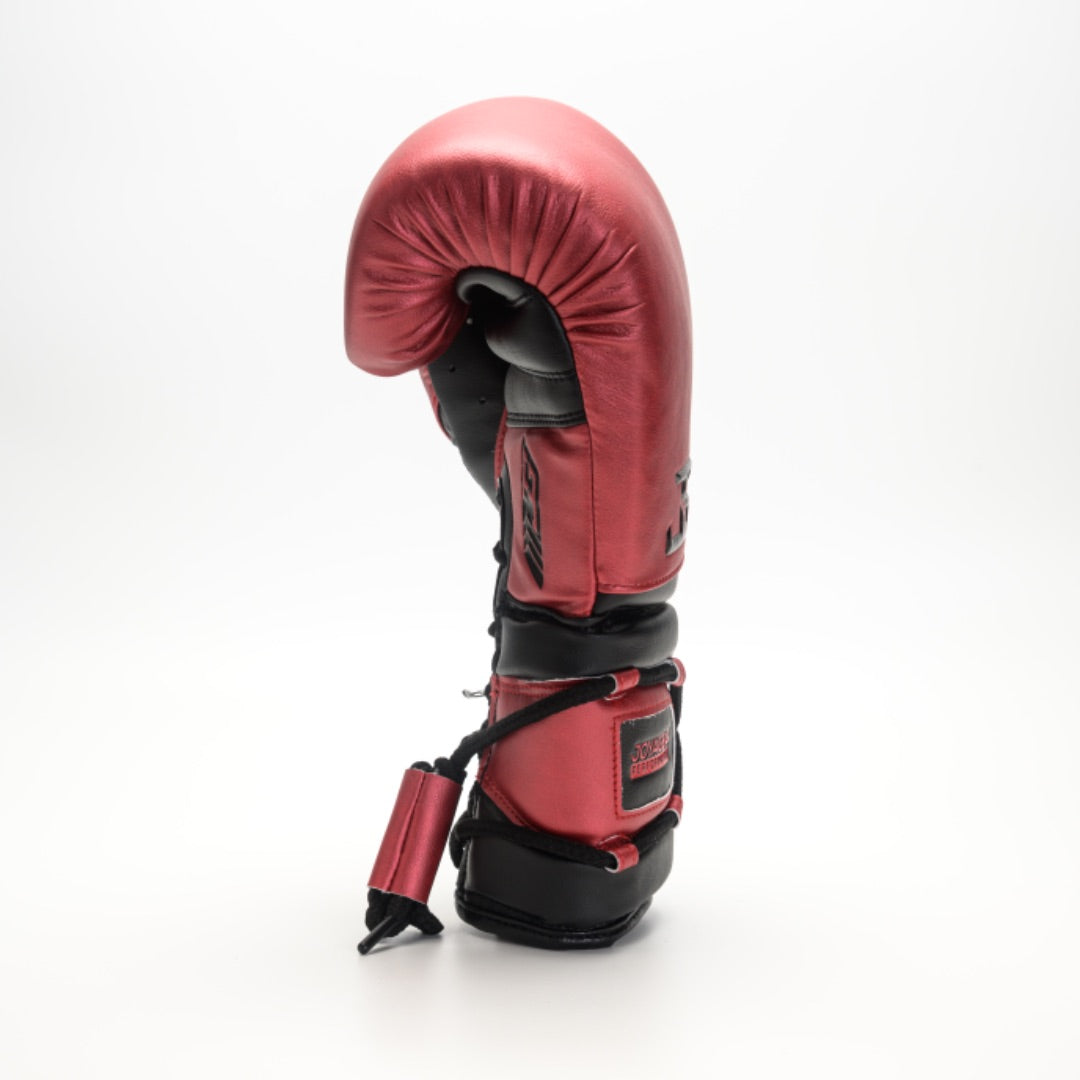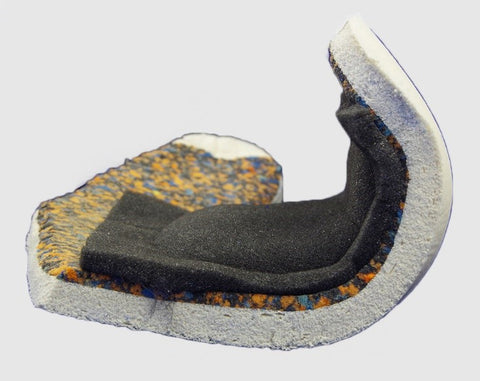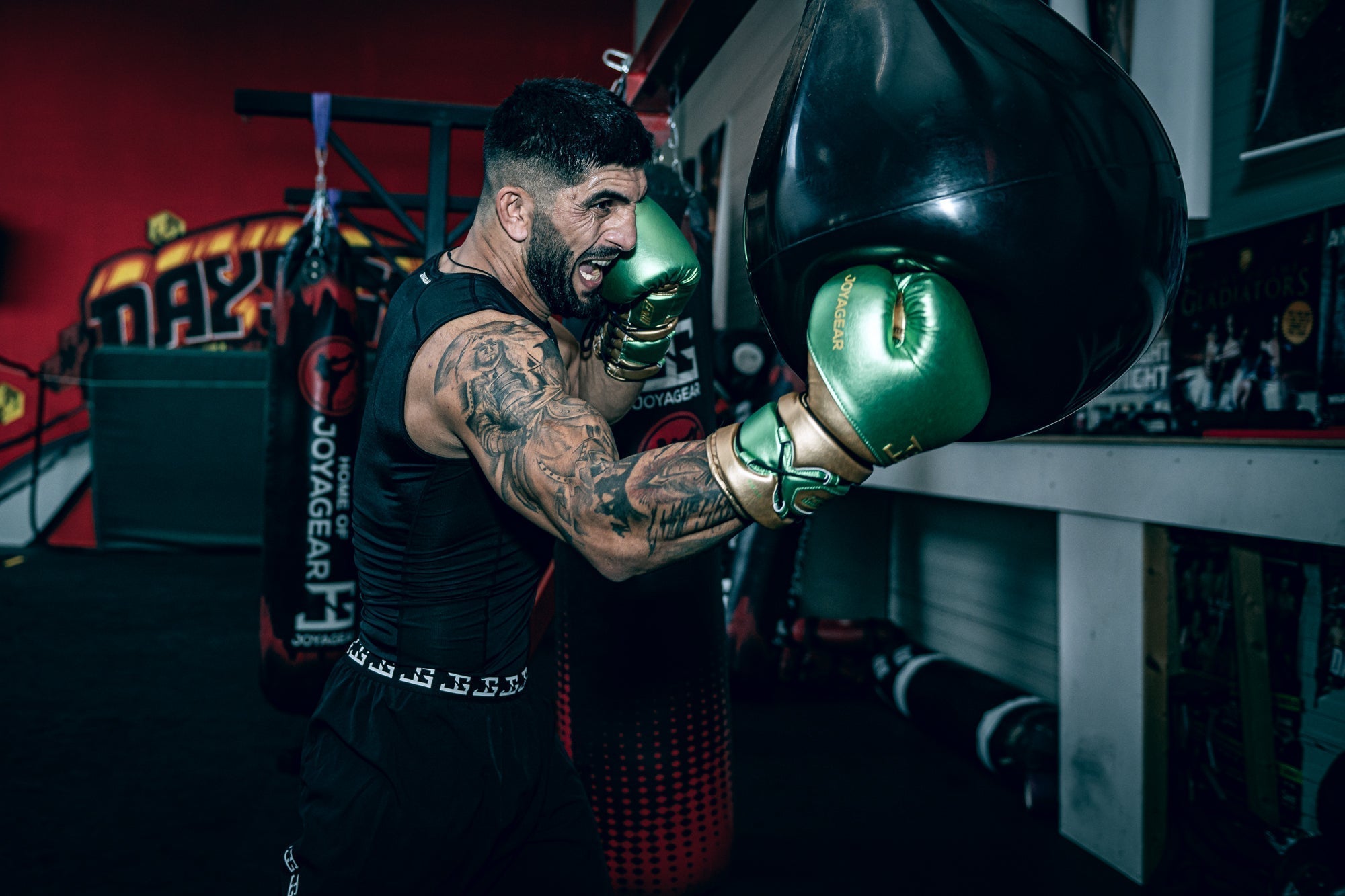How does the foam in boxing gloves work?

Everything About Shock Absorption and Protection
When you put on a pair of boxing gloves, you’re probably thinking about fit, weight, or design. But what’s inside the glove – the foam – might actually be the most crucial component. It not only determines how well you are protected but also how safely you protect your opponent. In this blog, we’ll dive deep into the world of shock absorption, foam technology, and combat sports safety.
What Exactly Is Foam?
Foam is a lightweight material made up of a network of gas bubbles trapped in a solid structure. In boxing gloves, polyurethane (PU) foam or nylon foam is most commonly used. The specific density, flexibility, and structure of the foam determine how well it can absorb and distribute impact.
The Function of Foam in Boxing Gloves
The primary purpose of foam is shock absorption. Every punch generates force, and without cushioning, that force would transfer directly to your hand joints (and your opponent). Foam dampens the impact, ensuring that:
-
Your knuckles, fingers, and wrists are protected
-
The force is spread over a larger surface area
-
Your opponent suffers less injury
How Does Shock Absorption Work?
When you punch, the foam compresses under pressure. The air and material absorb kinetic energy and convert it into heat or movement within the foam. Then, the foam slowly returns to its original shape. This process helps reduce and slow down the impact force.
Why Is This Important?
Without proper protection, you risk:
-
Bone fractures in your hand or wrist
-
Joint injuries due to lack of support
-
Chronic issues such as arthritis or tendon inflammation
For your sparring partner or opponent, a quality foam layer means:
-
Reduced risk of concussion
-
Fewer cuts and bruises
-
Safer training sessions
Types of Foam in Boxing Gloves

Single-layer foam
-
One foam layer
-
Usually cheaper, but offers limited protection
Multi-layer foam
-
Several layers with different densities
-
Each layer absorbs impact differently, resulting in better shock absorption
Gel-infused foam
-
Enhanced with gel to distribute impact more effectively
Memory foam
-
Conforms to your hand and slowly returns to shape
-
Comfortable and protective, but often pricier
The Ideal Foam Structure
An effective foam construction must:
-
Compress without collapsing
-
Spread force evenly
-
Recover quickly after each punch
How Thick Should the Foam Be?
It depends on use:
-
Training / bag work: 12–16 oz with thick foam
-
Sparring: 16 oz or more, with a softer foam core
-
Competition: 8–10 oz, thinner for speed but still protective
Foam Aging: What Happens Over Time?
Foam loses resilience due to:
-
Compression fatigue: permanently compressed areas
-
Moisture & sweat: breaking down foam cells and causing bacteria or mold
-
Temperature changes: making the foam brittle
Old gloves with worn-out foam drastically increase injury risks. That’s why regular replacement is essential.
Foam and Your Opponent’s Safety
Overly hard or worn-out foam can cause:
-
Increased head impact → higher concussion risk
-
Sharper punches → cuts, bruises, broken noses
Especially in sparring, gloves must remain soft and shock-absorbing.
Competition vs. Training Foam
-
Competition gloves: thinner, firmer foam for performance and speed; minimal protection
-
Training gloves: thicker, softer foam for maximum protection for both fighter and partner
You need different gloves for both purposes.
Innovations in Foam Technology
Modern brands use advanced technologies such as:
-
Five-layer systems: each layer with its own function (impact absorption, distribution, comfort)
-
Anti-bacterial foam: prevents odor and mold
-
Temperature-sensitive materials: adapt to your body for better performance
What Makes the Joyagear Performance Glove Unique?
The Joyagear Performance Glove features a five-layer foam construction. Each layer is carefully selected for density and flexibility, ensuring:
-
Maximum hand protection
-
Even impact distribution
-
Long-lasting resilience, even with intense use
Its ultra-durable Microfiber PU leather also shields the foam from moisture and wear.
Why Top Fighter Bahram Radjabzadeh Chooses Multi-Layer Foam
Bahram deliberately chooses gloves with multiple foam layers. For fighters as explosive and powerful as he is, this extra protection is crucial.
The Role of Hand Wraps
Foam works even better when combined with quality hand wraps. Wraps stabilize your joints and provide compression, allowing the foam to function more effectively.
Cheap vs. High-Quality Gloves
| Feature | Cheap Gloves | Quality Gloves |
|---|---|---|
| Foam Type | Single, low-density | Multi-layer, high-density |
| Cushioning | Uneven, wears quickly | Consistent, long-lasting |
| Comfort | Stiff or too soft | Balanced, ergonomic |
| Protection | Limited | High |
Investing in quality saves money long-term by avoiding injuries, frustration, and frequent replacements.
How to Tell If Your Foam Still Works
Watch out for these signs:
-
You feel more impact on your knuckles
-
Gloves feel “flat” or stiff
-
Foam feels uneven or lumpy
-
Gloves smell musty or feel damp
If you notice these, it’s time for a replacement.
Caring for Your Foam
-
Always air out your gloves after training
-
Use glove dryers or odor-absorbing pouches
-
Never leave them in a damp bag
-
Clean the exterior regularly, but leave the inner foam untouched
In Conclusion
The foam in your boxing glove is your first line of defense. It protects:
-
Your hands from fractures and overuse injuries
-
Your opponent from unnecessary damage
-
Your training from costly injuries and downtime
That’s why you should always choose gloves with advanced foam technology – like the Joyagear Performance Glove.
Shop Now: The Joyagear Performance Glove
Experience the difference yourself. Our Performance Gloves feature:
-
5-layer foam construction
-
Ultra-durable Microfiber PU
-
Professional fit and finish
Train hard. Train safe. Train with Joyagear.
0 comments


